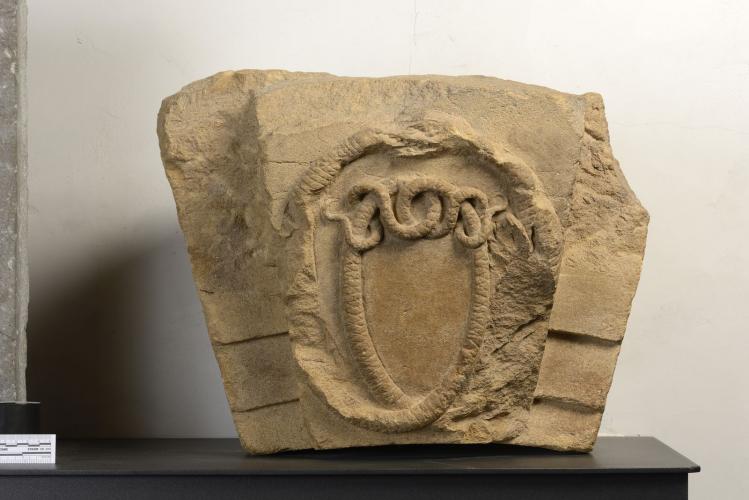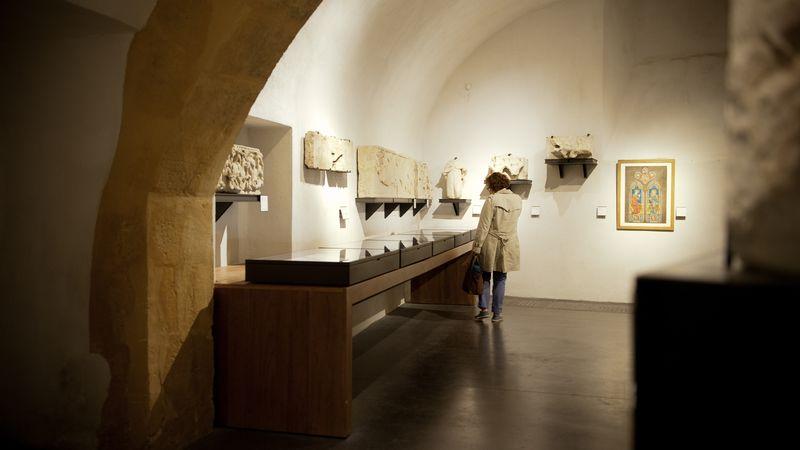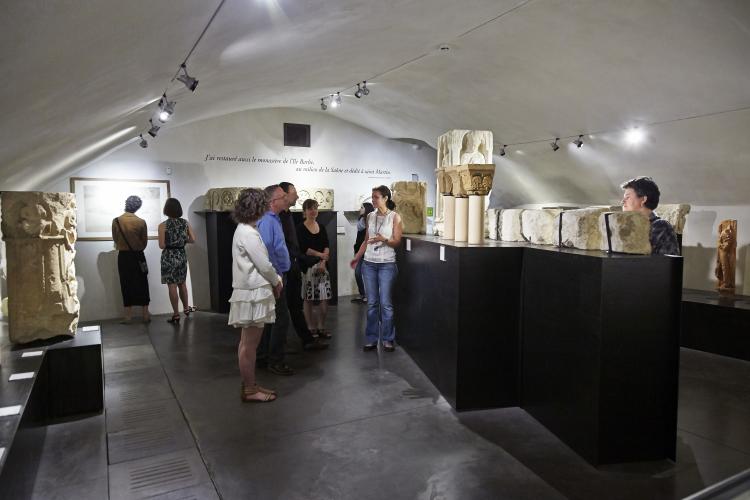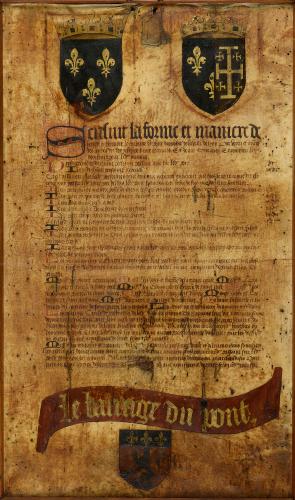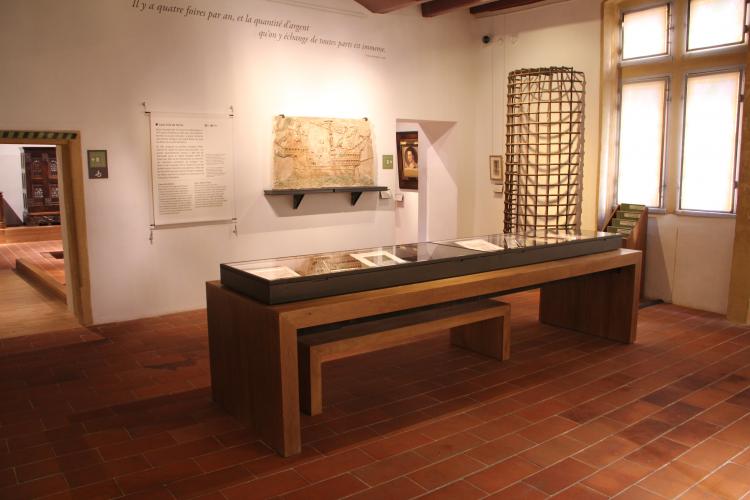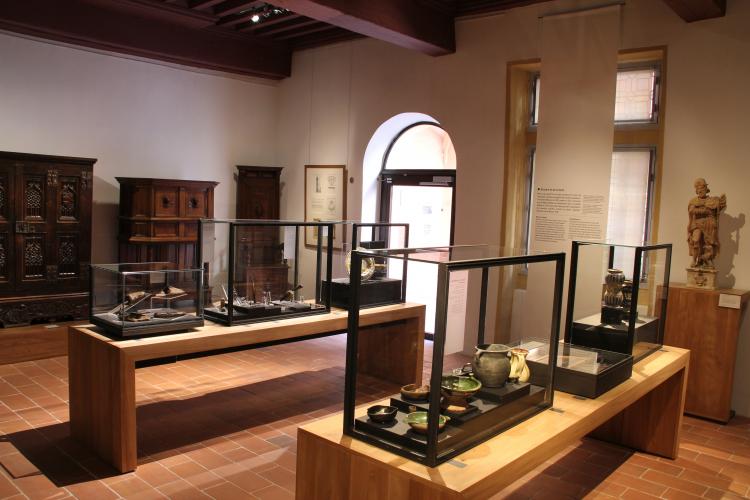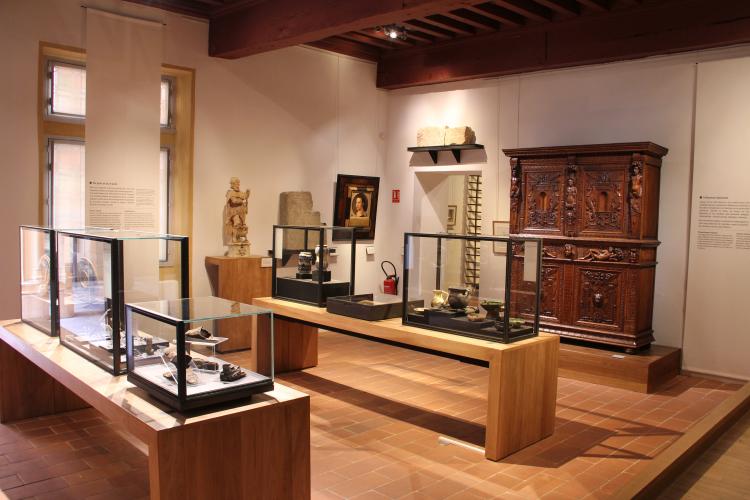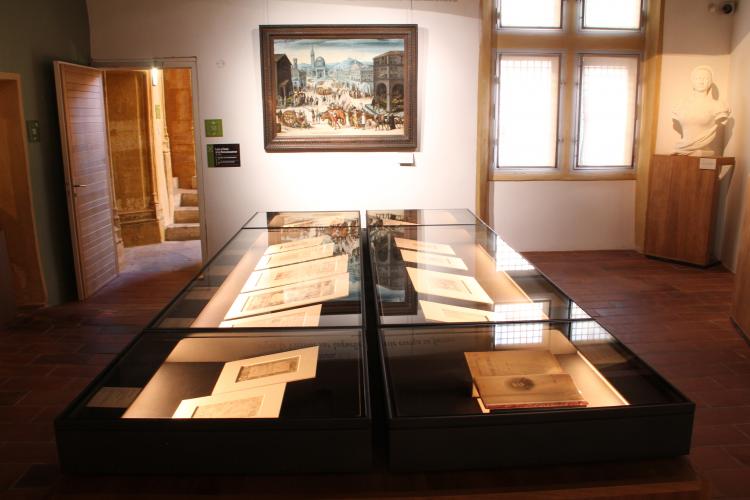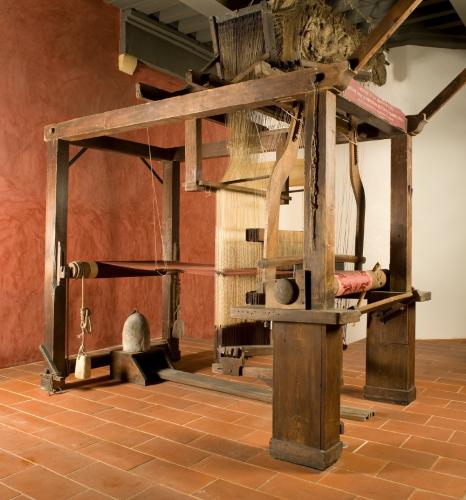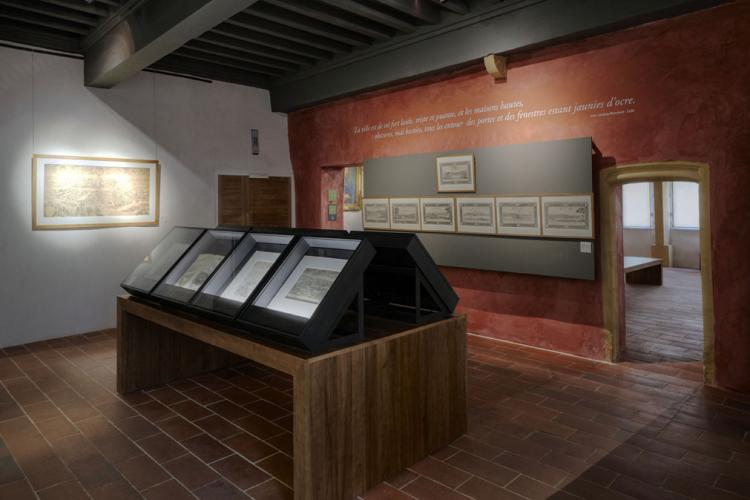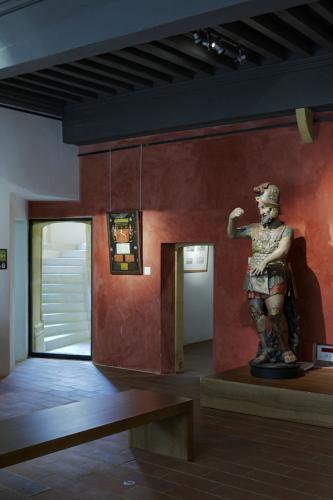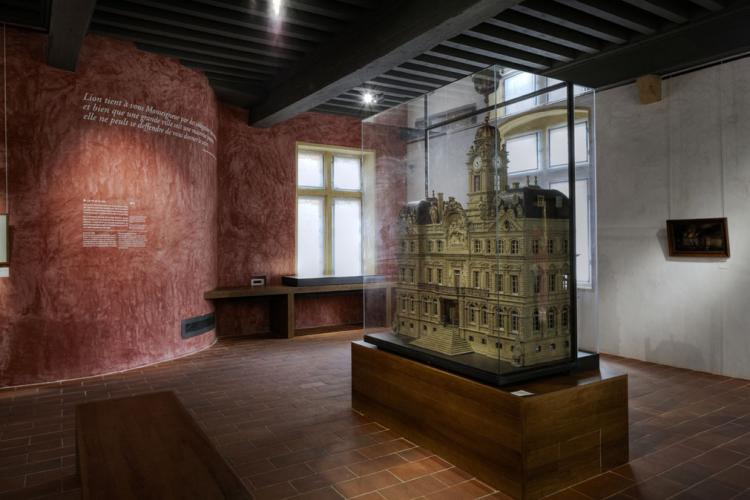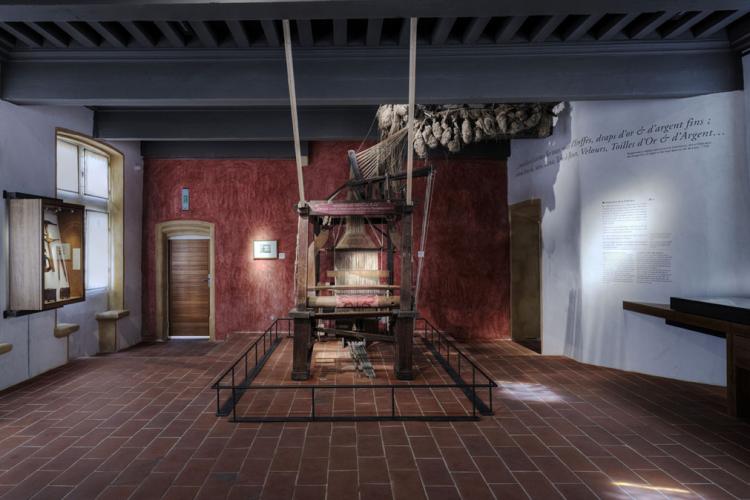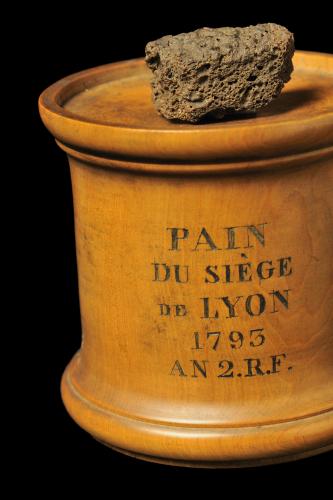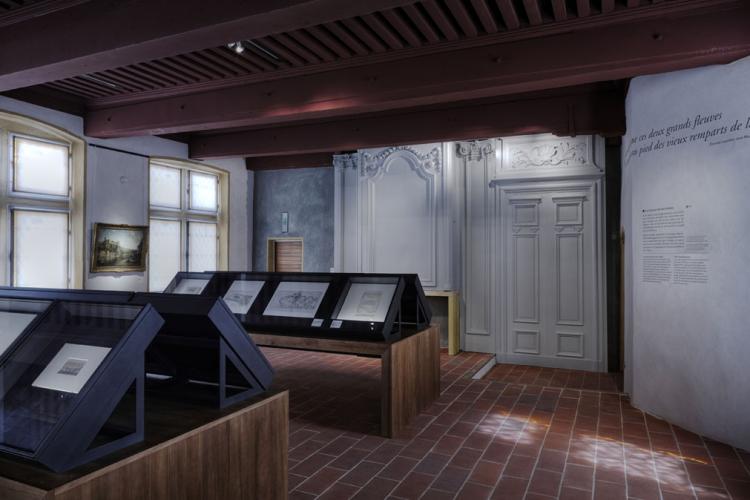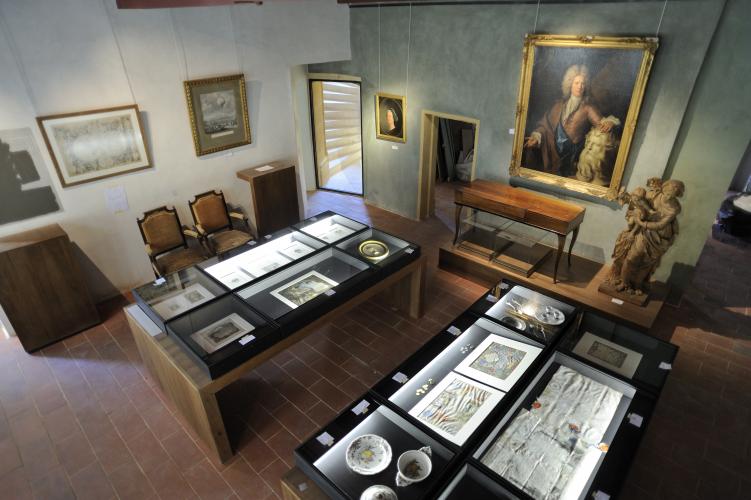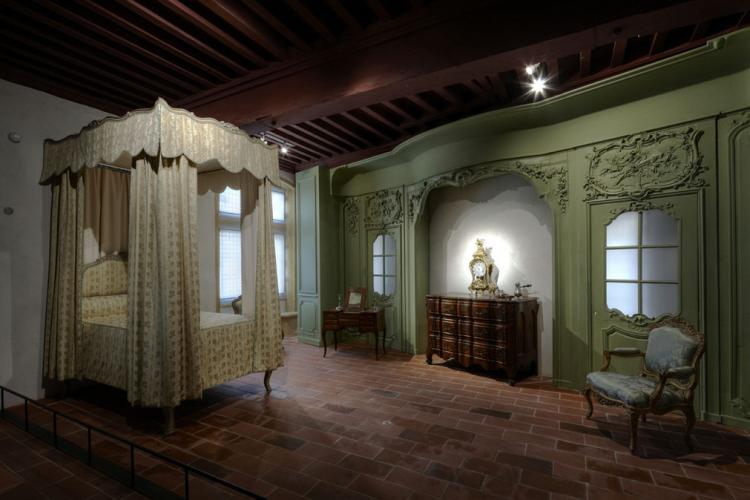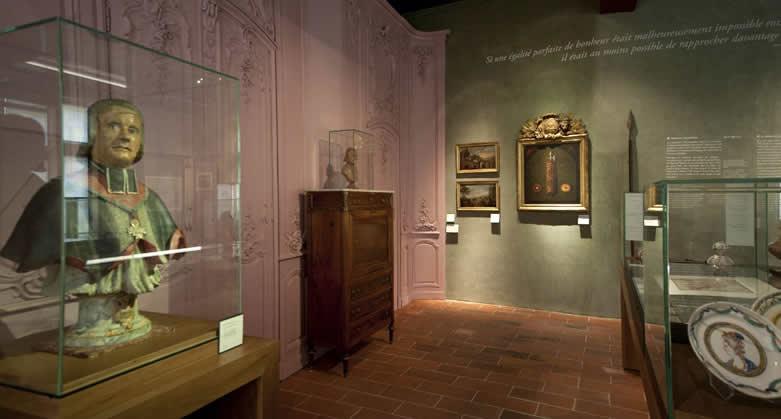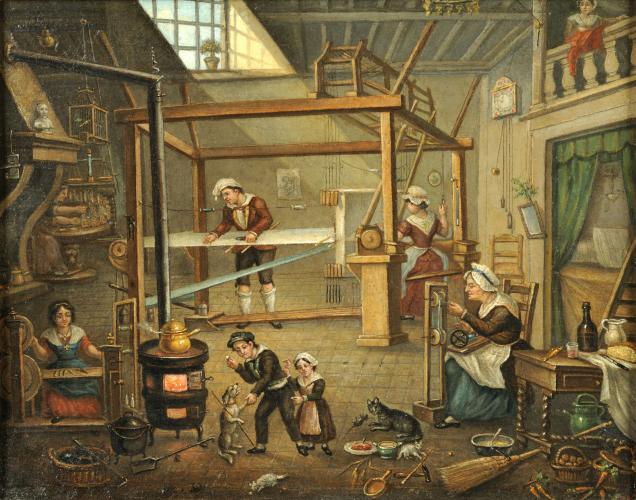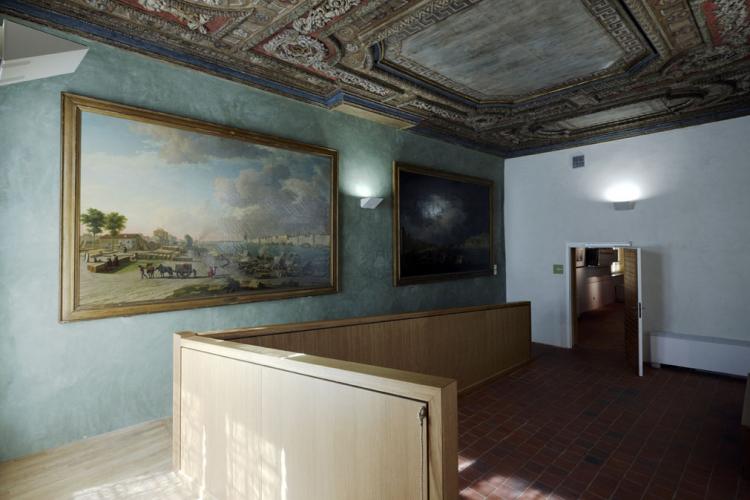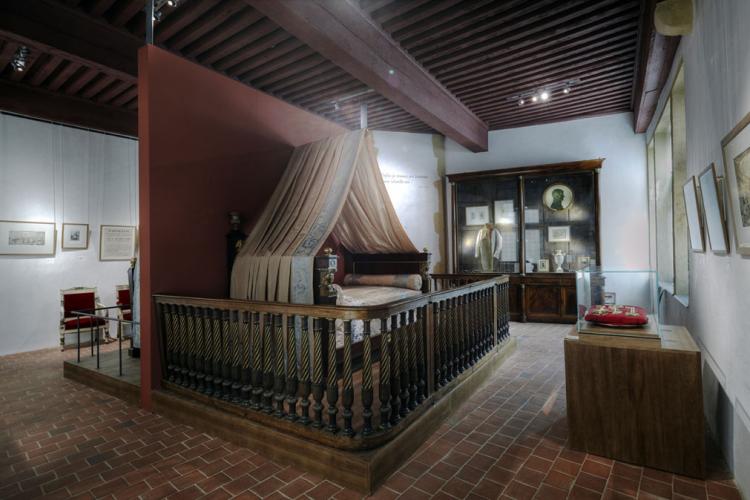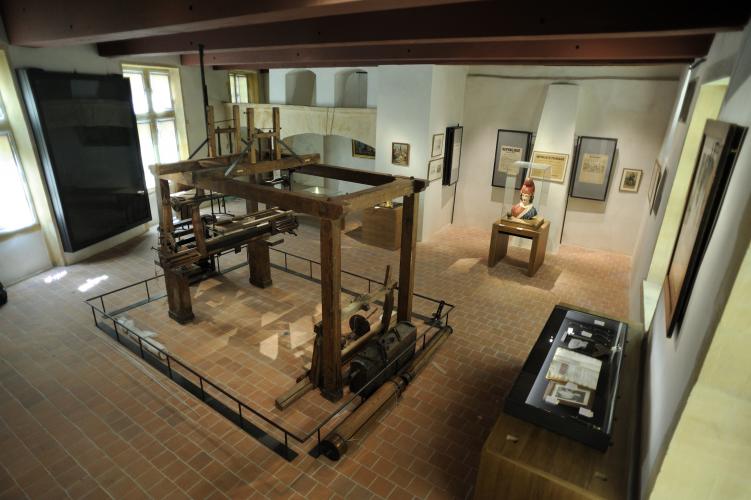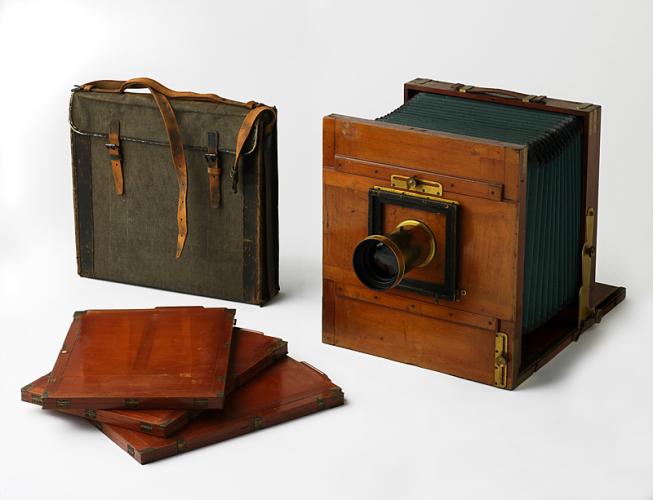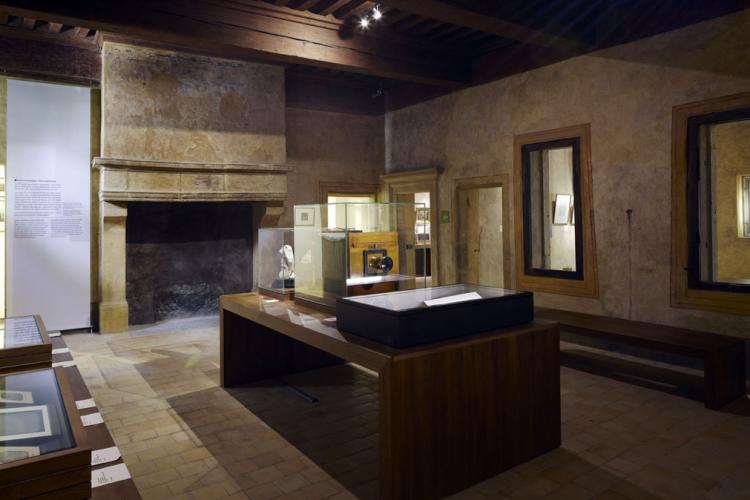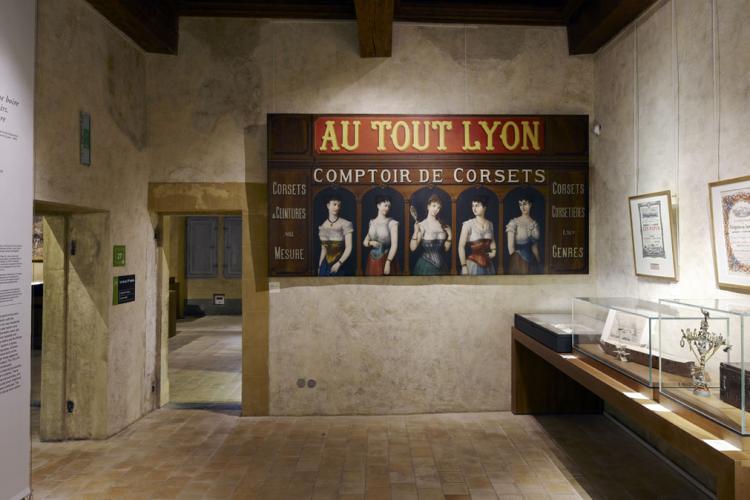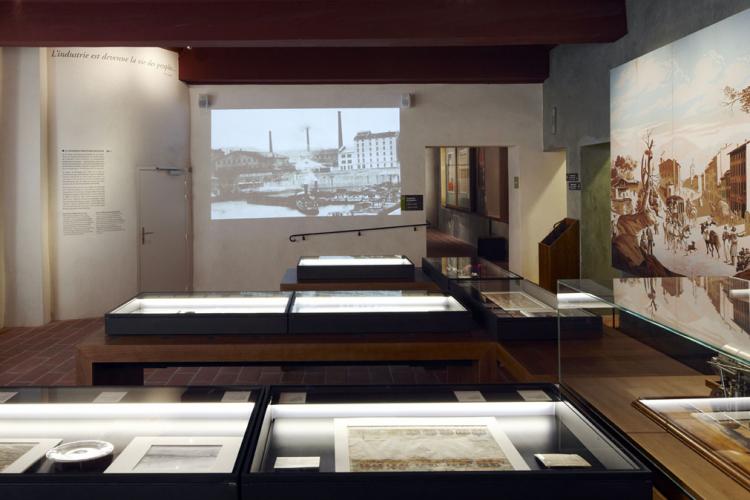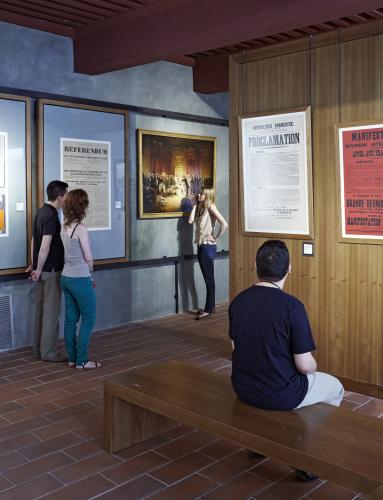History of Lyon
Antiquity and high middgle ages
First century B.C to 10th centurySalle 2 et 3 de l'ancienne muséographie de 2009.
During Antiquity, the Lyon site comprised : Lugdunum, the Roman colony on Fourvière Hill, Condate, a Gaul town at the foot of la Croix-Rousse, Canabae, a warehouse district on the peninsula, Vesia, an important Gallo-Roman urban community located to the north-west (Vaise).
At the end of Antiquity, when the Roman Empire was declining, the town closed in along the banks of the Saône. This was where a new power emerged during the 4th century, namely the Church.
Up to the 9th century, the town hugged the right bank of the Saône with tiny communities dotted here and there on the hillsides and a narrow band along the left bank.
The martyrs
In the early days of Christianity, Christians who refused to pay homage to the Emperor were periodically persecuted by the Imperial Roman Empire. In 177, among the 48 Lyons martyrs, two in particular stand out : Blandine and Pothin
The middle age
11th to 15th centuriesSalles 4 et 5 de l'ancienne muséographie de 2009.
Religion was a powerful force during the Middle Ages.
On the right bank of the Saône, the Saint-Jean- Baptiste Cathedral and its associated churches made up the heart of the town : they towered up in the centre of a fortified enclosure along side the Episcopal palace, the prisons, the cloister and the homes of the canons.
A district frequented by craftsmen and merchants sprung up to the north, around Saint-Paul. There was only one bridge : the stone bridge over the Saône, opposite Saint-Nizier.
During the 13th century, the peninsula developed with the creation of new religious orders... and the construction of the first ridge over the Rhône (on the site of the current pont de la Guillotière) ! Rue mercière, the commercial artery, linked the two bridges.
The great plague
The life of the inhabitants of Lyons pulsated around the religious calendar and the fairs. The demographic boom of the 13th century was suddenly curtailed in 1348 by the Great Plague, which claimed one-third of the citizens of Lyon.
Renaissance
15th and 16th centuriesSalles 6 à 9 de l'ancienne muséographie de 2009.
The town became denser during the 16th century: the districts of Saint-Paul, Saint-Jean and Saint-Georges were populated with tall, narrow houses constructed in the lower region of the Fourvière Hills.
On the peninsula, dwelling places sprung up around Saint-Nizier. Thoroughfares developed outside, in the suburbs of Vaise, la Croix-Rousse and la Guillotière.
In 1562, during the religious wars, Baron des Adrets, who was temporarily in command of the town, had the walls of several monasteries knocked down, opened up the districts of Saint-Paul and Saint-Jean, and cleared the streets (between Bellecour and the rivers in particular) and the squares : Confort and Cordeliers... Short sharp shock town planning, but effective !
Les foires
Depuis le 15e siècle, la ville a obtenu du roi d'organiser 4 foires annuelles. Elles rassemblent chacune jusqu'à 6 000 marchands. L'échange des marchandises est suivi par la foire du change, système de crédit : en se développant, il fait de Lyon une des principales places bancaires du royaume.
17th century
1600-1699Salles 10 à 14 de l'ancienne muséographie de 2009.
During the 17th century, the upper classes set up home around place Bellecour on land sold by the religious orders – the main owners of the peninsula. Although the number of convents multiplied, important public buildings such as the first stock exchange at Saint-Jean and the Hôpital de la charité (charity hospital). The most important building was undoubtedly the hotel de ville (town hall). Constructed on the place des Terreaux by Simon Maupin in 1646, from this point onwards, it housed the consulate, which managed the town from 1595. A boost in local power…precisely at a time when the king tightened his control over the town.
The large-scale manufacture of Lyon silk
Managed by Jean-Baptiste Colbert, it comprised all of the merchants, weavers and their family workshops along with craftsmen from all other silkrelated professions.
18th century
1700-1799Salles 15 à 18 de l'ancienne muséographie de 2009.
The density of the town continued to increase during the 18th century. On the peninsula, land belonging to the church were sold off and divided into plots, and new buildings emerged.
Jacques-Germain Soufflot was the major architect of the century. His credits include the quai saint-Clair (Saint-Clair Quay) on the Rhône to the north of Les Terreaux, and, first and foremost, the reconstruction of the hôtel-Dieu, the outline of which flanked the right bank of the Rhône. He also reshaped the stock exchange.
It was only at the end of the century that the town witnessed a real expansion.
The engineer, Perrache, designed the peninsula extension to the south by carrying out drainage works at the confluence. The architect, Morand, designed a bridge over the Rhône and a new district on the left bank, opposite the town hall.
These advances were to continue well into the next century.
The siege of Lyons, 1793
In Lyon, the French Revolution is marked by a constant political shift between Paris and Lyon : Lyon was radical when Paris was temperate, and vice-versa. These “misunderstandings” culminated in the siege of Lyon by the national armies in 1793. This episode entered the history books of Lyon later on as being symbolic of the period…
The 1st half of the 19th century
1800-1850Salles 19, 20, 21, 22 de l'ancienne muséographie de 2009.
Following the Revolution, the town had more work to do in rebuilding its economy than its ramparts. Visiting Lyon in 1800, Bonaparte nevertheless symbolically launched the reconstruction of the façades of place Bellecour.
The town remained subjected to the limitations of its former urban fabric. The servicing of lands rendered fragile by the rivers continued: the south of the peninsula filled in, and quays and bridges were constructed.
The peninsula was punctuated with roads and buildings with Neo-classical façades sprang from the ground.
The relaunch of the silk-making industry coupled with the mechanical advances of the silk-making industry led to the colonisation of the slopes of la Croix-Rousse by the tall Canut buildings with huge windows.
Canut Revolts
The first concentration of workers in France, Lyon, with its Fabrique (silk-making industry) set the scene for the social revolts of the weavers. The first social advances came to light against the backdrop of Utopian socialism : an industrial tribunal, provident societies and workers’ press.
The 2st half of the 19th century
1850-1900Salles 24 à 27 de l'ancienne muséographie de 2009.
In 1852, the communes of Vaise, la Guillotière on the left bank of the Rhône and la Croix-Rousse became part of Lyon.
Under Napoleon III, the Vaïsse prefecture drew up a spectacular regeneration programme for the town centre : refuse collection, public transport, construction of town halls, trade centres, banks and large shops.
Schools, churches, pathways and the Parc de la tête d'Or (park/zoo) were also constructed in an attempt to improve the lifestyle of the inhabitants of Lyon.
Towards the end of the century, the industrial revolution led to the development of industrial districts on the outskirts. They focused on manufacturing and living quarters, like Monplaisir to the east and Gerland to the south.
A symptom of late 19th century Marian piety, the Notre-Dame de Fourvière basilica stood out the Lyon skyline.
A second industrial revolution
Starting with the silk industry, this led to the creation of the chemical, followed by the pharmaceutical industries and to car manufacture. It also heralded the start of the Lumière brothers’ famous cinematograph.
Le 20e siècle
1900-1999Salles 28 à 30 de l'ancienne muséographie de 2009.
The 20th century was the era of urbanism and communication networks.
The Mayors/builders Edouard Herriot followed by Louis Pradel constructed huge public facilities such as the Grange-Blanche hospital and set people thinking about social housing : reasonably priced residential areas as seen in the États-Unis housing estate and Villeurbanne in the interwar year, big states of the 1960s-70s. Outskirts developed, especially to the east and the south.
The “car era” emerged during the 1970s : bridges, tunnels and motorways sprang up in the centre of Lyon, which became the hub for traffic between northern and southern France.
From the 1960s onwards, the city became involved in the Part-Dieu regional centre. In 1977, Lyons’ 2nd symbolic monument dominated the skyline at a height of 165 m : the Crédit Lyonnais tower, also known as “le Crayon” (the pencil).
The résistance…
Remaining a free zone up until 1942, Lyon took great pride in being the centre of the resistance movement, which it was, but it was also a forum for collaboration : Jean Moulin operated here and wascaptured here !

